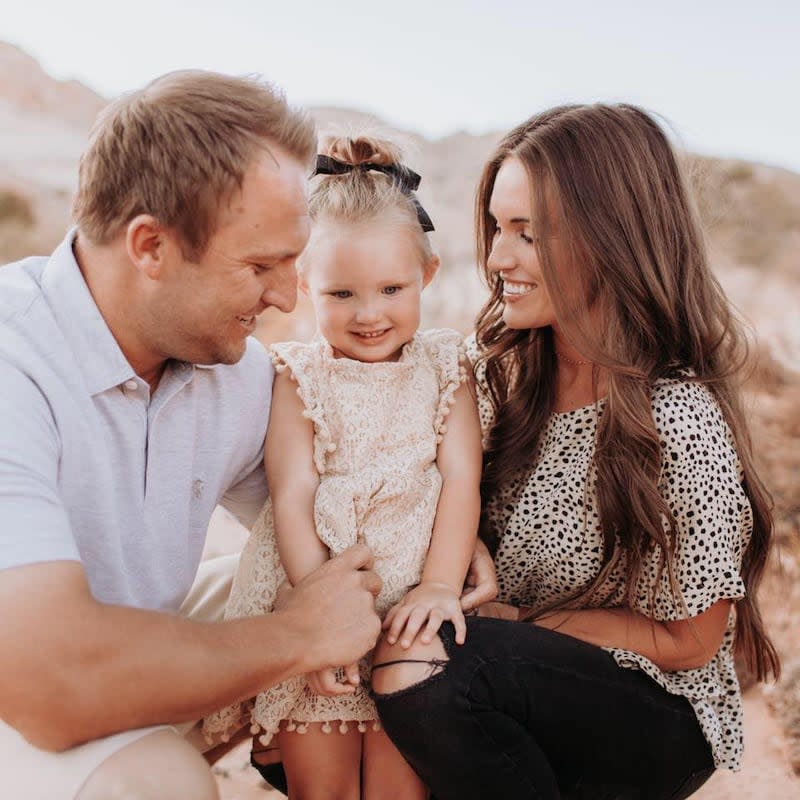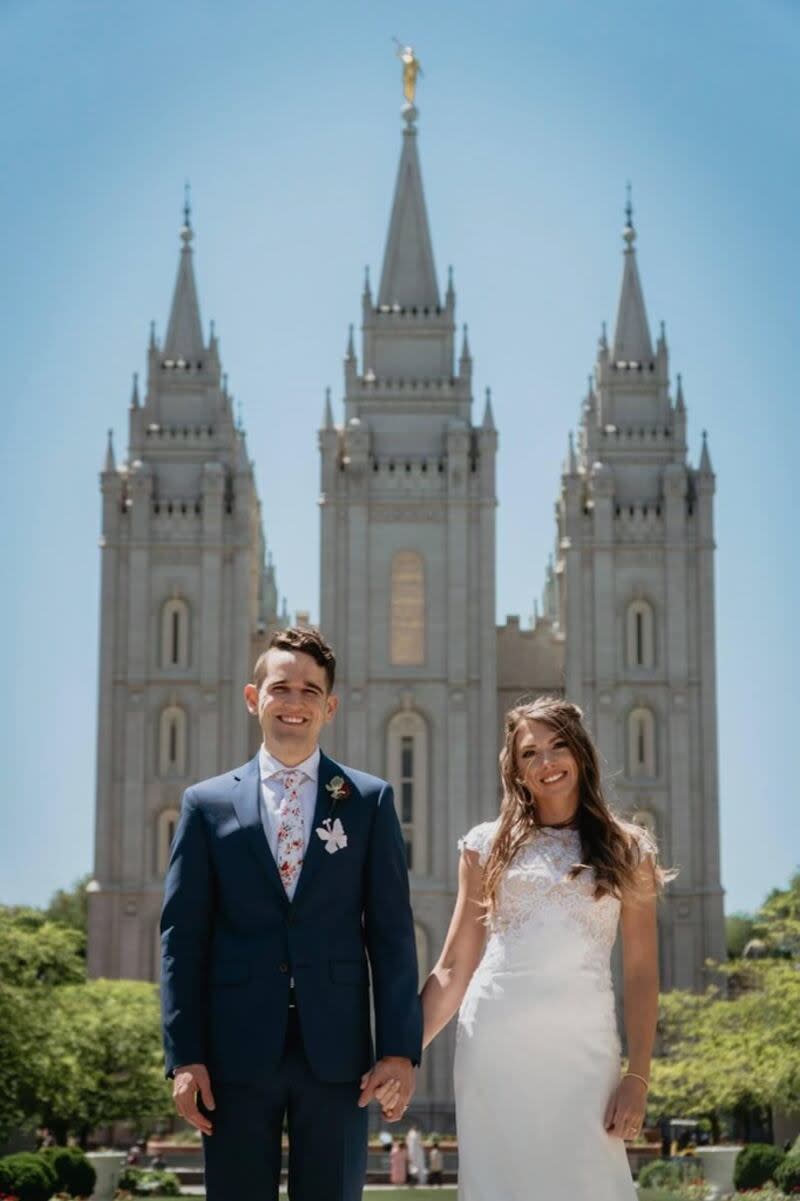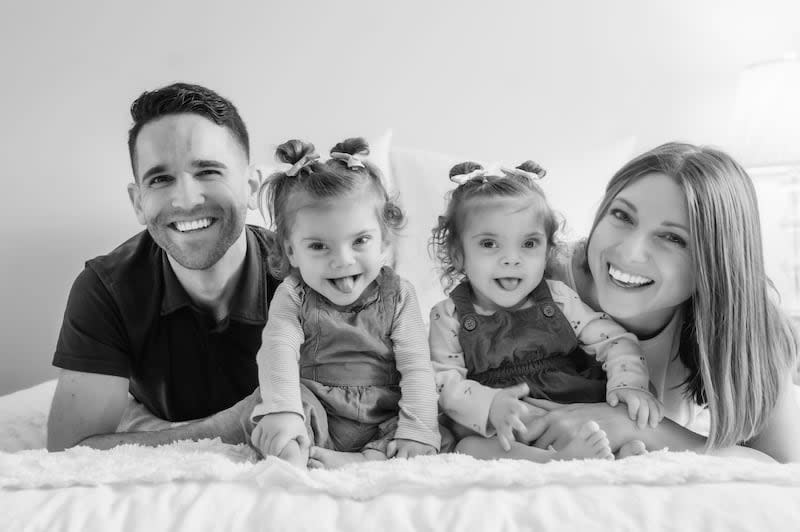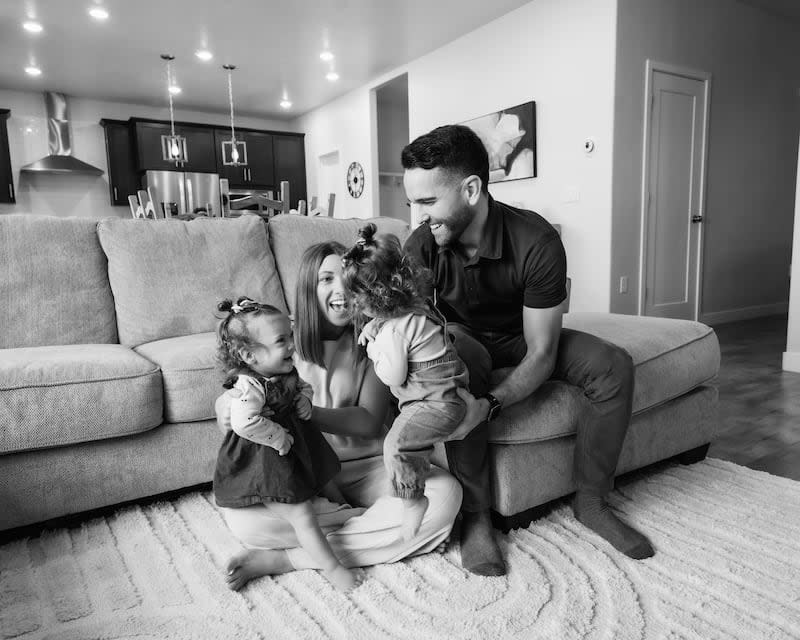‘Make keeping covenants cool again’: Exploring the stories of ex-ex-Latter-day Saints

This is the first in a series exploring stories of people who come back to faith.
Ashly Stone never imagined how her life was about to change when she tried heroin. “I was sick without it,” she remembers — “totally emotionally unstable.”
“Needing a substance to be able to function is a really rough way to live,” she remembers. This was a long journey from her happy upbringing as a “good kid” in The Church of Jesus Christ of Latter-day Saints. As Ashly recounted on the “All In Podcast,” she was eventually estranged from most people in her life — with the exception of her father.
“I don’t know how he didn’t give up on me, to be honest. … But he just didn’t. He always took my calls.”
Toward the end of her 15th rehab, a text message arrived from a friend at a previous treatment center. “Ashly,” he wrote, “if you read the Book of Mormon every single day, I promise you will never go back to your old life.”

“I couldn’t even imagine a life where I could live sober,” she recalled thinking. “That was so far from the realm of possibility.” But, she concluded, “I have nothing to lose.”
Ashly is now married and a mother of two young children. Eleven years later, she hasn’t missed a day reading the Book of Mormon, and she hasn’t touched drugs or alcohol either.
Today, she runs with Lauren Rose the “Come Back Podcast,” which shares stories of people coming back to The Church of Jesus Christ of Latter-day Saints. Although it isn’t even two years old, the podcast already has 1.2 million downloads across podcast platforms, and thousands of subscribers on YouTube.
Among the total episodes are 80 different stories of people coming back to faith, including 21 stories of people who came back to the faith after grappling with substance abuse or other addictions. There are also stories of people who once embraced critical narratives about the church or its history, and others who worked through significant health and emotional challenges.

Anything to feel better
Lauren Rose spoke of feeling lost as a teenager after her parents’ divorce. “You told me family was forever and now we’re not anything,” she said. “I was so, so torn by that.”
When her father began drinking and using drugs, she recalled added confusion. “All of a sudden, I have a father who’s taught me that all these things are bad,” and now “he’s doing them.”
Lauren began hanging out with a rough crowd and “started doing whatever,” as she stepped away from her faith entirely. She describes becoming really angry and feeling a “hatred towards all churches.”
“I saw everything all the time with a gray hue. Life had lost its luster … like, I just didn’t really care anymore.”
She drank and partied in an attempt to “escape” the weight of her life and “being so sad all the time.”
“I didn’t have God, I didn’t have anything to hope for.”
A new moment
When Lauren got an office job in Salt Lake City, she was struck by her Latter-day Saint colleagues. After years where “every relationship I had was toxic,” she noticed how “down to earth, just so humble and cool” her co-workers were — “so impressive in every way.”
“I had never met men like them.”
Watching the love, friendship and respect in their lives, she remembers thinking, “I want to be like them.”
Gradual changes
Changes for both Ashly and Lauren didn’t happen overnight. In her early period of sobriety, Ashly wanted to see what church would be like. “I’m going to test it and see if this actually makes me happy. If I feel better, then I’ll keep going.”
When she finished the Book of Mormon for the first time, Ashly describes waiting for some kind of a “big, huge lightning bolt spiritual experience.” Instead, she felt “pretty good.” And concluded “I’m just gonna keep going with this.”
After getting a limited-use temple recommend for the first time in 12 years, Ashly again remembers, “I’m waiting for this big, huge spiritual experience to happen to me.”
But again, she said, “I felt good. And I felt at peace. And I was kind of like, you know what? I’m just gonna keep going with this and see what happens.”
Eventually, Ashly said, “my whole life changed and transformed.”

Recalling the time she began participating again at church, Lauren said, “I started remembering all these things, everything was coming back to me.”
“Once I found out there was a God, everything changed and there was a light inside of me. People would come and say ‘your face is so bright.’”
“They could see it. I was so genuinely happy.”
After so much family trauma, Lauren still struggled with self-confidence, and began praying “every day” for it. She described gradually coming to see a “different view of myself.”
“I saw myself as a daughter of God. I had more confidence.” She said that’s now “something that no one can take away from me.”

Sharing more stories
Several years after returning, Ashly and Lauren began to notice online stories of people stepping away from their faith. “I need to stand up and say something about my story,” Ashly remembers thinking at the time.
“If it wasn’t for the church and the gospel of Jesus Christ, my life would still be in shambles today. Coming back to Christ and the church saved my life.”
“But now there are all these people that are bashing the church and saying all these things,” Ashly said, reflecting on how different her own experience had been. “Being in the gospel adds this depth to life … adding spiritual experiences in your life is such a beautiful thing.”
“It’s actually really cool to come back to church, and jump in with both feet,” she said.
In an interview with the Deseret News, Ashly and Lauren joked about their hopes that their podcast will amplify the message: “Let’s make keeping covenants cool again.”

A growing collection of stories
Ashly and Lauren aren’t alone in their work. Fiona Givens, who has co-authored “The God Who Weeps” and the “Christ Who Heals” with her husband Terryl, confirmed she is preparing an anthology of stories from people who have returned to the faith. Brigham Young University-Idaho professors Sarah and Eric D’Evegnee have also reviewed a number of “return narratives” now aggregated on the Faith is Not Blind website.
There are also signs of a broader trend. After decades of growth in those identifying as religiously unaffiliated, Pew Research reported in January about data from the prior year showing for the first time in decades a decrease in those who identify as “nones.”
Challenging departure stereotypes
Contrary to the presumption that “once you leave, you don’t come back,” professor Sam Hardy at Brigham Young University points to three different datasets that suggest a significant subset of people who leave do come back.
In Hardy’s own 2023 nationally representative survey of 2,030 U.S. adults, he estimates that of the 35% of the sample who reported stepping away from religion, 22% had reconverted. And in the National Study of Youth and Religion, professors at the University of Notre Dame and the University of North Carolina at Chapel Hill followed a nationally representative sample of thousands of American teenagers across a decade starting in 2002. Out of 2,207 teenagers who first identified as committed to their faith, 11% reported stepping away three years later. But after another three years 36% had come back.
A similar longitudinal study by professors at Brigham Young University, The Family Foundations of Youth Development, followed 1,600 families from Utah, Arizona and California starting in 2016 (61% identifying as Latter-day Saint). Of those teenagers who reported being religious at first, 10% stepped away two years later. Of that subgroup, 19% came back within another two years. (These shorter-term studies don’t account for people who return to faith after longer spans of time, or who leave again after coming back).

Becoming new
Not everyone celebrates these decisions to return. Lauren described a variety of emotions from some nonreligious friends and family. That included some who weren’t sure how to act around her, telling her at one point, “you aren’t you.”
“But I was,” she said. “I was just a happy version of me ... I was finally starting to heal.”
Lauren spoke of moments early on where she felt scared about returning to church, “I can’t believe I’m going to do this,” with thoughts like, “You can’t be a nice Latter-day Saint girl. That’s not who you are.”
But she outgrew those worries, eventually concluding: “I can choose whoever I want to be ... every person can … that’s how they become who they are.”

